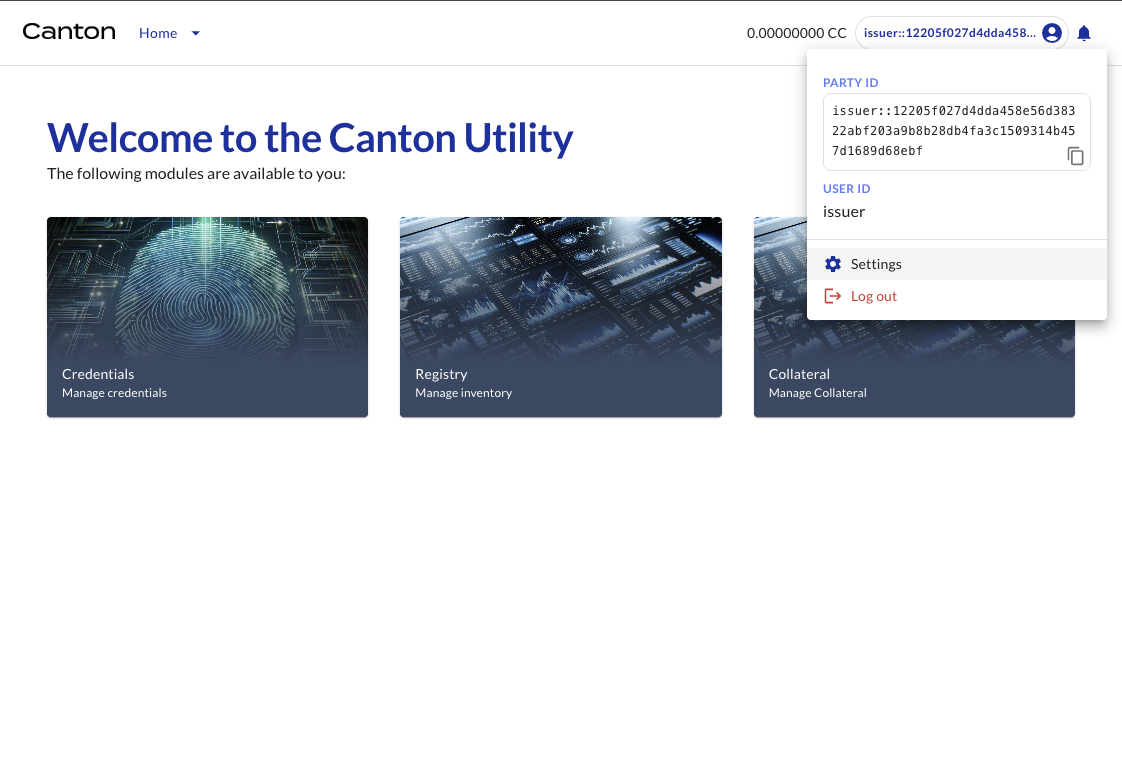- Overview
- Setup
- Tutorials
- How Tos
- Reference
- DAR Versions
- API Reference
- Commercials API
- Credential API
- Registry API
- Utility.Registry
- Utility.Registry.V0.Configuration.AppReward
- Utility.Registry.V0.Configuration.Instrument
- Utility.Registry.V0.Holding.Allocation
- Utility.Registry.V0.Holding.Burn
- Utility.Registry.V0.Holding.Lock
- Utility.Registry.V0.Holding.Mint
- Utility.Registry.V0.Holding.Transfer
- Utility.Registry.V0.Holding.Unlock
- Utility.Registry.V0.Rule.Transfer
- Utility.Registry.V0.Types
- Utility.Registry.V0.Util
- Utility.Registry.App
- Utility.Registry.App.V0.Configuration.Operator
- Utility.Registry.App.V0.Configuration.Provider
- Utility.Registry.App.V0.Model.Burn
- Utility.Registry.App.V0.Model.Mint
- Utility.Registry.App.V0.Model.Transfer
- Utility.Registry.App.V0.Service.AllocationFactory
- Utility.Registry.App.V0.Service.Holder
- Utility.Registry.App.V0.Service.Provider
- Utility.Registry.App.V0.Service.Registrar
- Utility.Holding
- Utility.Registry
- Settlement Utility API
- Collateral Utility API
- Operator Backend API
Active Contract State¶
UI Access¶
In the Utility UI, the entire state of active contracts is read only once for a given template or interface. By default, the initial query is made using WebSockets. The UI uses a regular HTTP call as a fallback if, for any reason, WebSockets fail to connect.
After the initial state is established, the Utility UI queries only for granular state updates and applies them on top of the initial state.
Both the initial state and all subsequent updates are stored in browser local storage.
This results in much faster response times when querying data from the UI, as well as a reduced network footprint.
Disabling WebSockets¶
By default, the initial state of active contracts is queried using WebSockets.
If, for any reason, you wish to disable this, follow the steps below.
Login to the Utility UI.
Enter user settings.

Toggle the “WebSockets” switch to disable it.

Now, all queries for active state contracts will be made via regular HTTP calls.
Troubleshooting¶
If you encounter any problems using the Utility UI with either displaying or querying for the data, try the solutions below.
Clearing Local Storage Cache¶
Clearing Local Storage cache may help when data is not rendering or not displaying properly. After doing this, the Utility UI will again query the server for the initial state of active contracts when entering affected views.
Login to the Utility UI.
Enter user settings.

Press the “Clear” button on the “Active Contract Storage” tile.

All the data associated with the Utility UI in your browser local storage should now be removed.